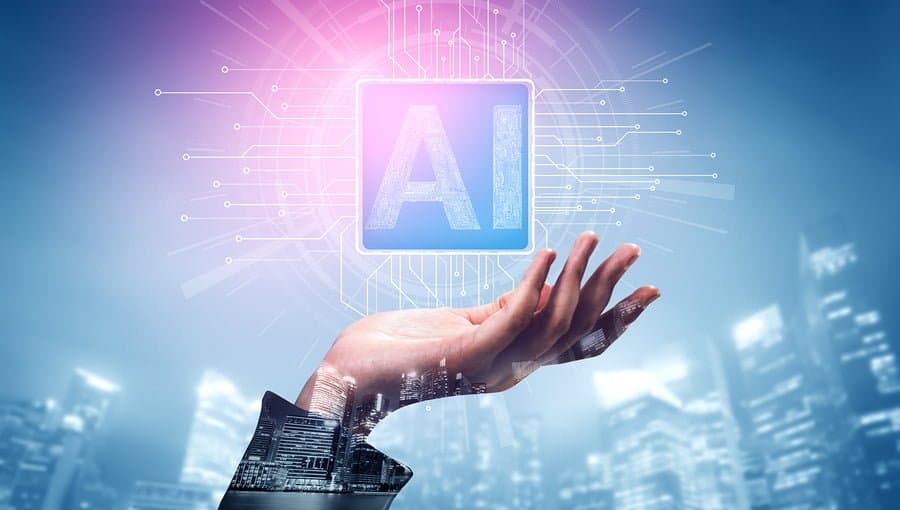The term “Artificial Intelligence” was coined in 1955 by John McCarthy.
This technology has been around for a while. However, we have seen a dramatic rise in its popularity and adoption in the last few years.
From self-driving cars to chatbots – Artificial Intelligence (AI) is everywhere! According to the latest statistics on AI, the global revenue from AI applications is expected to rise to a whopping $31.2 billion by 2025!
But why is it so popular? What is it about AI that has made these devices an integral element of our day-to-day activities?
To answer this question – and more – we will need to dive deeper into the world of automation and machine learning.
So, let’s see what awaits us this year and beyond.
The definition of AI in the modern world
Before we go any further, let us define the concepts we plan to discuss.
AI is an enormously broad field. In this way, the intelligence is often hard to define. Yet, we could say that AI in the modern world relates to computer protocols that mimic and replicate the human thought process. The essential components of an AI system are discovery, prediction, action, justification, and learning.
As such, AI programs can be of use in all sorts of industries. Without a doubt, we have come a long way since the days of IBM’s mainframe that mastered the game of checkers.
What are the main types of AI?
In recent years, artificial intelligence dominated the headlines in the tech-related world. The impressive momentum should reward us with revolutionary discoveries in the years to come.
For instance, statistics on artificial intelligence say that 31% of companies that are not using an AI system plan to install one in the next 12 months.
But is all artificial intelligence the same? What are the main types of AI? Allow us to explain.
Experts often divide the field of AI into two categories: weak and strong AI.
The so-called “weak” AI is the one we see in self-driving cars or our smartphones. For instance, Siri and Alexa are typical examples of weak AI.
On the other hand, “strong” AI remains a theoretical possibility, an idea. If the prototype ever comes to life, strong AI will equip machines with problem-solving skills and intelligence. In other words, robots will be able to come up with creative ways to perform tasks and objectives.
No matter the type, AI offers an enormous range of possibilities. Some of the skills that are an integral component of AI in today’s world are machine learning, deep learning, and natural language processing.
The benefits of AI
The USA and China are the countries that invest the most in the development of artificial intelligence. Think about it – would they be spending billions of dollars on AI if this technology didn’t have the potential?
What are the main pros of using AI in the modern world?
Precision and accuracy
Low-error rate is one of the main advantages of artificial intelligence. This feature is ideal for industries where mistakes can be costly. Robots are more precise than humans, and that is why AI can save lives or protect people from dangerous situations.
Immunity to outside conditions
AI systems are never affected by the environment. In other words, these elaborate protocols will work the same in any weather or climate. Rain or shine – robots don’t care. On top of that, artificial intelligence never sleeps. That’s also one of the reasons why chatbots are growing in popularity in recent years.
Information handling
AI systems can handle an enormous amount of data in a short period. The speed of data processing is growing with each passing day, and that is why we are all excited to see what will happen in 2020. Faster access to information is the precursor to improved productivity.
Emotionless and logical
Unlike humans, robots and AI systems do not experience emotional reactions. As such, these devices and programs can come up with logical conclusions at all times. A rational assessment of high-stress situations is ideal for healthcare or the military. Nonetheless, other industries can benefit from this feature as well.
Risks and concerns associated with AI
According to AI statistics, 40% of business owners believe that artificial intelligence will increase worker productivity. Improved automation, for example, is one of the side-effects of AI.
Nonetheless, AI comes with a set of risks and drawbacks. For instance, AI systems are an expensive investment.
The lack of creativity is also one of the downsides of artificial intelligence. As we all know, things like intuition, common sense, or wisdom are an essential element of our everyday lives. As of yet, computer programs are not able to replicate these feelings and states.
Of course, AI could become dangerous if malicious people get their hands on this technology. The famous myth that AI will take human jobs seems to be a misplaced theory. Yet, the hazardous nature of AI remains a strong possibility. That is why safety standards in dealing with artificial intelligence need to be as high as possible.
The verdict
As it seems, 2020 will be the breakthrough year for AI-based enterprises. From financial trading to medical diagnoses – artificial intelligence is there to make our lives better.
After all, chatbots are already responsible for as much as 85% of customer service. Similar services could save companies billions of dollars. Needless to say, consumers will reap all the benefits of advancements in the field of AI technology in 2020 and beyond.

